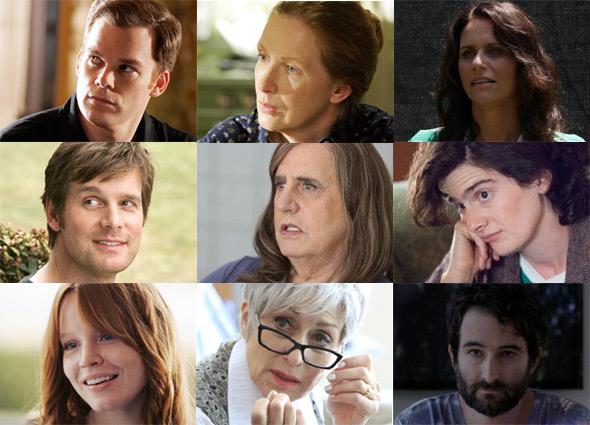A little over a year ago, Margaret Lyons wrote a piece for Vulture that asked, “Why Isn’t There a Successor to Six Feet Under?” As Lyons noted, The Sopranos—which premiered on HBO just a couple of years before the Alan Ball series about a family named the Fishers—has a whole litter of Emmy-winning descendants, to the point that the Tony Soprano-like antihero has become nearly synonymous with television’s so-called golden age. But during this same period, the complicated, funny, and dark family drama has practically disappeared—if not from television entirely, then at least from most discussions of the best shows on TV. (For instance: Since Six Feet Under ended, Big Love and Friday Night Lights are the only more or less family-focused shows to be nominated for the Outstanding Drama Series Emmy, one time apiece.)
But now there is a successor: Transparent, the Amazon Prime series starring Jeffrey Tambor that has earned raves from nearly everyone. Like Six Feet Under, Transparent centers on a family of three children (two daughters and one son this time), a tradition-abiding mother, and a difficult father whose life has just changed dramatically. OK, that last bit is a joke, sort of: When Transparent begins, the father has just decided to tell the Pfefferman children that she is a transgender woman who goes by the name of Maura, not Mort, as they have always known her; the big father-related twist on the Six Feet Under pilot is that he gets hit by a bus and dies. (It happens in the first few minutes, so I don’t think that qualifies as a spoiler. Also the show’s been off the air for almost a decade now.) But the Fisher patriarch, played by Richard Jenkins, remains a presence in the series, appearing to his children in daydream-like sequences and showing up in flashbacks. And he, too, had secrets, we soon learn. Each of his children and his widow wonder over the way his personality has influenced the decisions they’ve made. On Transparent, Maura has had a similar effect on her kids.
That tangle of parental influence and sibling rivalry, of deep love for one’s family and almost as deep-seated resentment of them, is the essential subject of both shows. And there are several parallels between the Pfeffermans and the Fishers. There’s the sibling who has played by the rules but who now wants to break them. The ladies’ man who starts to think about settling down. The brilliant daughter who’s questing and confused. All the characters struggle with questions about sex and sexual identity as they make their way in relationships both good and (mostly, perhaps) bad. There are more superficial similarities as well: the very specific Los Angeles setting, the attractive female rabbi (Molly Parker on Six Feet Under, Kathryn Hahn on Transparent).
This isn’t a coincidence: Jill Soloway, who created Transparent, was a writer on Six Feet Under. She told one interviewer that she “kept using the example of Six Feet Under” when writing the pilot, and she told another, plainly, “Six Feet Under is my inspiration.” (When asked if Transparent was “her Six Feet Under” by that same interviewer, she said yes.) And yet many reviews didn’t mention the HBO show, or simply noted that Soloway worked on that series without drawing any connections between it and the new one. (Even Margaret Lyons’ own rave noted Six Feet Under only in passing—though she did point out that the show, along with Soloway’s other earlier work, was “part of Transparent’s DNA.”)
That’s understandable: There is plenty to say in a review of a show as layered (and as good) as this one without dwelling on analogues and precedents. (Girls and Louie, which also influenced Soloway, did come up fairly often, maybe in part because, like Transparent, they’re half-hour-per-episode ostensible comedies.) But I think it’s worth establishing a lineage here. For one thing, doing so may help lovers of one series find the other, the way that Breaking Bad fans who haven’t seen The Sopranos go back to that earlier show and find another one to relish—and also begin to understand where Walter White came from. And that gets to the real reason that pointing out the parentage is important: It helps viewers—and, fingers crossed, network executives—see what kinds of indelible stories people have figured out how to tell on television, and how they might do so again.
